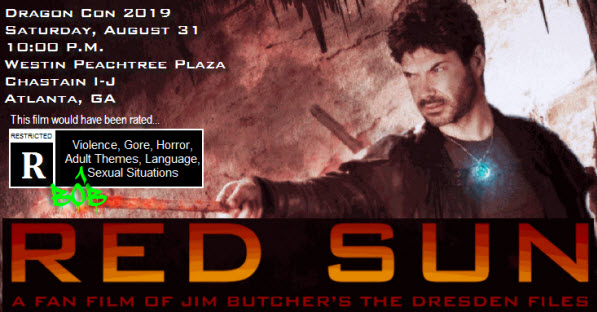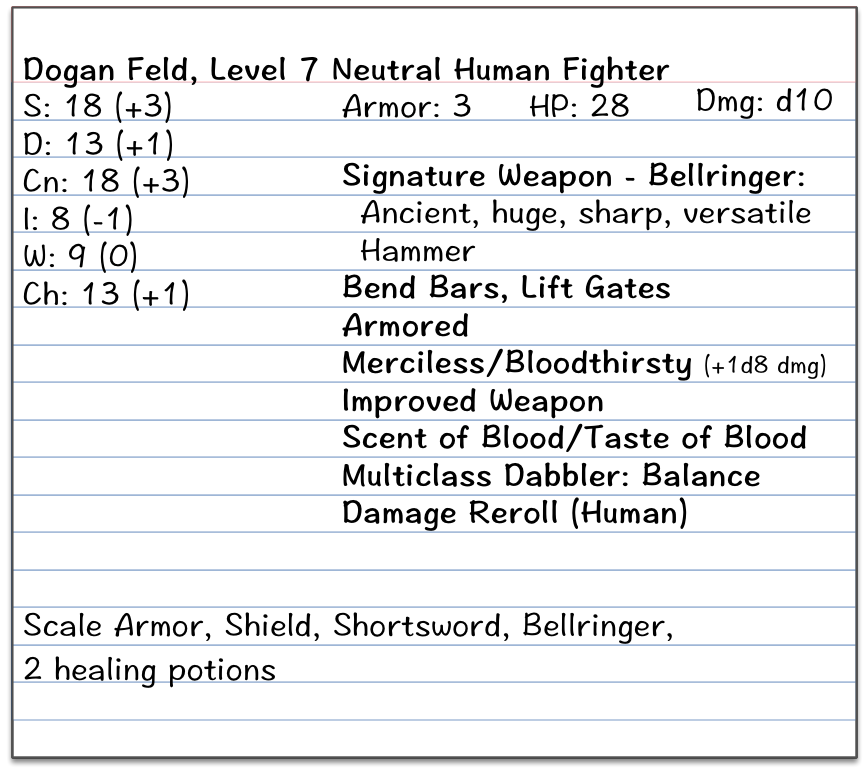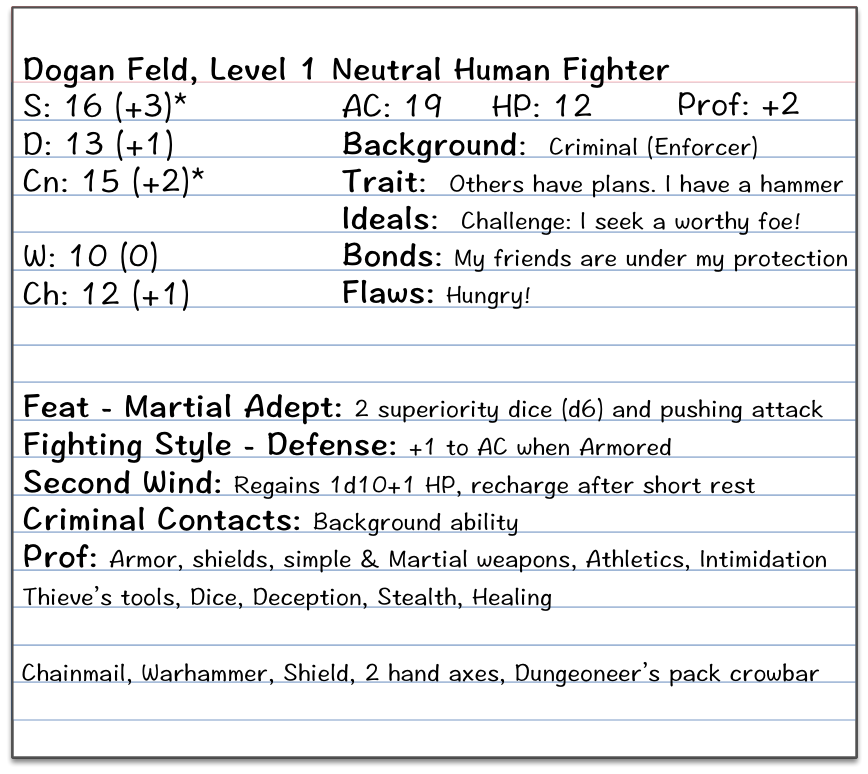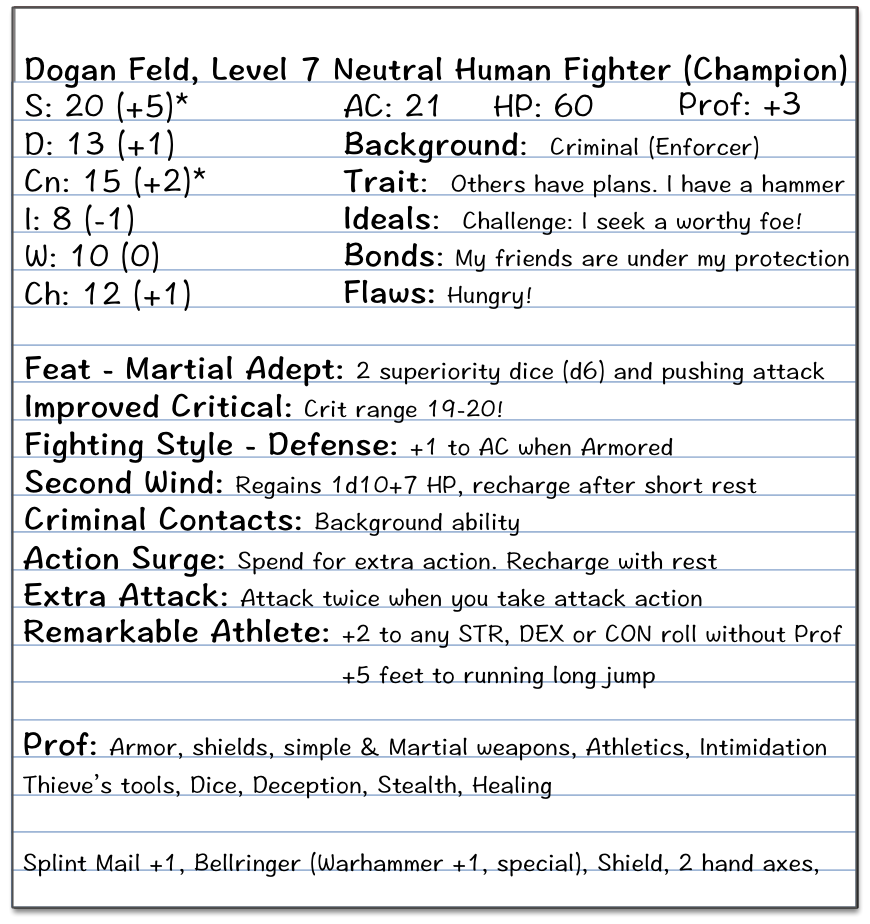Darkmantle – The very least of the D’s, you can tell it’s slightly embarrassed to be here, and hopes you won’t notice that you just read the much cooler and tougher Cloaker a few pages back. It looks like a stalactite and falls on head and tries to eat it.
Death Knight – opposite the Darkmantle, this entry has virtually no lore, just a few rules notes and the story of Lord Soth. Not sure how I feel about that. On one hand, Soth is pretty darn iconic. On the other, I kind of want a little ringwraith action.
However they fit in the setting, they’re pretty terrifying. CR 17, magic resistance, great stats and powerful spellcasting (plus, of course, immortal until redeemed, an idea I have a hard time really getting behind). And, of course, they look awesome.
Demilich gets two pages, a non-trivial amount of which is dedicated to Acererak, which I can’t argue with. Where Soth is a great example of an idea that preceded him, Acererak is basically the reason this category exists.
Appropriately, the Demilich is terrifying, with brutal legendary actions, lair actions and Lair traits. With nothing but these moves, you could easily construct some sort of horrific tomb. But I want to call out one ability in particular: Legendary Resistance. It’s a little ability, usable 3 times per day, that lets the Demilich turn a failed saving throw into a success.
This may seem small at first glance, but this is actually pretty huge. This is basically a wrench in the works for any “surefire” plan. I know, as a player, I have set up the occasional guaranteed win scenario if we can just get a particular effect off (like a hold, a knockdown or whatever). Those seem harder in 5e (fewer “save or die” effects) but players are clever, and this is a nice insurance policy to guarantee that you’re not going to get an easy win.
Demons 12 pages long, with the monster entries not beginning until 4 pages in. A good breakdown on how they work, cosmologically speaking, as well as entries on the major Demon Lords before moving into the demons themselves.
So, I loved the demon section of the original MM, and I am totally steeped in Planescape lore, so I absolutely looked at this through those two lenses. The lack of statblocks for the Demon Lords is, while understandable, a little sad. Those statblocks were pretty awesome. The actual Demon Lords listed are exactly who they should be – the MM1 classics (Baphoment, Demogorgon, Jubilex, Orcus and Yeenoghu) along with the other big two – Graz’zt and Lloth.[1]
The demons themselves are typed from 1 to 6, though some types have more than demon. For example, Barlgura, Shadow Demons and Vrocks are all Type I, Balor & Goristo are both Type VI and so on. This is a nice compromise between the classic numbering as the fact that it stopped working as soon as the MM2 was published. I’m particularly happy to see the Shadow Demon make the initial cut.
The Demons themselves range from CR 1/8 (manes) to 19 (Balor) so they’re pretty useful for the duration of a campaign. It includes rules on some classic ideas, like taking Quasit’s as familiars, Demonic amulets containing their essences, bound demons and demonic possession and demons summoning more demons during a fight.
Speaking as a player who is totally happy to refer to them as Tanar’ri, I’m pretty happy with the handling of demons.
Devils The Baatezu, the opposite side of the coin. Rigid, structured and tyrannical, they get similar page count and presentation to demons. One oddity is that there are fewer archdevils than abyssal lords because the 9 hells has only, well, 9 layers, where the abyss is infinite. But those 9 archdevils are pretty badass, and it’s kind of a shame that we don’t get blurbs for them. What we do get is a very neat table of the 9 hells listing the layer, it’s name, it’s archduke/duchess and (most interestingly) it’s previous rulers. Lots of familiar names on this like, but Tiamat’s presence on the “previous rulers” of Avernus list intrigues me, and I’m curious if the Dragon entry is going to give me any more information on this.
In fact, without the archdevils in the mix, the color is all pretty flat. The demon entries are largely descriptions of creatures we’re about to see awesome pictures of, with only the shallowest of details. The rules are fine – Imp familiars, devils summoning devils and such, but this entry seems more promise than delivery.
This disappointment may be part of why the art seems uneven. Some entries are fantastic, like Bone Devils and Eriynes, and none are bad, but some are almost generically devilish.
Dinosaurs This section is disappointingly unillustrated, with 6 dinosaurs and 2 (small) pictures all jammed onto two pages. This section is largely going to be of interest to druids, since I think these may be the most powerful beasts in the book, with the T. Rex weighing in at CR 8.
Displacer Beast Back to looking a bit more panthery, this has got a pretty cool image, well integrated into the layout. The rules for displacement are nicely straightforward (disadvantage on attacks, disrupted when someone lands a real hit). They’ve got a bit of unseelie history to explain their blink dog antagonism (blink dogs appear in the beast appendix).
Doppelganger Sneaky, shapeshifting humanoids, I’m always curious to see how tough these things are (CR 3, which seems higher than I remember from the ones in the starter set adventures). No real surprises here, though there’s a reference to Changelings as Doppelganger children who eventually rejoin their kin. That sounds like it has weird implications for the playable race, but I’m willing to wait and see.
Dracolich Oh ho, so this is the first template we’ve seen. This is a template applied to a ancient or adult dragons. Type changes to Undead, they get resistance to necrotic, immunity to poison, a number of condition immunities and magic resistance. Otherwise it still has the powers and capabilities it had (including breath weapon, which is an interesting departure).
One curious note in the lore is that the process of becoming a dracolich requires an aide – someone to complete the ritual for the dragon. Putting a pin in that for plot purposes.
Shadow Dragon This is another template for a dragon that has spent too much time in the Shadowfell and has become infused by it. This is a more mechanically signifigant change than dracolich as the dragon becomes a living shadow, changes its damage type and also gets a new breath weapon (as well as senstivity to sunlight)
Dragons This is the big one. 17 and a half pages on the chromatic dragons alone. Some of this is going to be stat blocks at various ages (Wyrmling, Young, Adult and ancient) but I am really curious to see if they vividly distinguish between the dragons beyond terrain and breath weapons.
We open with some generalizations (including the data point that Tiamat is a lesser god, opposite Bahamut, and resentful of Asmodeus) which are all reasonably on point. Greedy, Egotistical and dangerous. Good enough. Also a sidebar that covers draconic spellcasting (since it’s not in the actual stat blocks before we move on to the Black Dragon.
It’s age CRs are 2, 7, 14 and 21 respectively, which seems to suggest an intent to align draconic age groups with the tiers of play. They pick up Legendary actions as an adult which continue into their ancient age.
The black dragon lore is ok – live in swamps, lots of description of what they look like (redundant with the art), some tactics, and notes that Lizard men and kobolds serve it. There’s a note that its presence can spawn shambling mounds, which is neat, but feels more like a regional effect.
The Lair actions and regional effects are a little more colorful, but I admit to wondering how they interact with age. It seems like the effects should be more pronounced for an ancient dragon than for a wyrmling, but that entry doesn’t seem to reflect that.
This pattern repeats for the other colors. Each entry is ok, but feels padded for the amount of information it conveys, with the Lair proving the most interesting part of the entry. This is a vague criticism of the “it could be better” variety, but the reality is that there is definitely enough information to use each of these dragons in fun and interesting ways.
Dragons, Metallic Ok, so beign good and shapeshifting are interesting, but this really caught my curiosity with “Good dragons can recognize humanoid bloodlines by smell” which is really a lovely touch for millenia-old creatures. We also get a little more information on Bahamut, including confirmation of his status as a lesser god.
The Metallic dragon entries are actually shorter than the Chromatic ones, but that works out to their favor, since it forced the writers to get right to the cool parts. Combined with the fact that they’re not necessarily framed as antagonists, the metallic dragons are largely more interesting, with more playable hooks. Even their preferences for loot are more fun.
The Lair actions remain interesting, but the regional effects are particularly colorful because unlike effects we’ve seen to date, these are largely beneficial. They are ways in which the dragon makes a place better. I admit, that’s pretty cool. And some (like the silver dragon’s ability to shape clouds like stone) suggest great play opportunitities.
Dragon Turtle – Not a lot of depth to these guys, but they’re big, scary and dangerous, and smart and motivated enough to be used in a variety of ways.
Drider – Not sure what to say about these. Their story hasn’t changed (failed the Spider Queen, were horribly transformed as a result) then went off to sulk. Not bad for creepy cannon fodder, but like a lot of Drow stuff, it feels like a little thought could have made them richer.
Dryad – Right off the bad, this intrigued me with the proposition that some dryads are fae who get bound to trees as punishment for loving a mortal. They’ve got a lot of interesting powers, but very little offensive capability. Even their charm is no longer the career ender it once was. There are only a few tweaks on the concept, but they’re the kind that make me want to use a Dryad in a game.
Duergar – Eventually I expect we’ll get PC racial options for these guys, but in the meantime, these deep dwarves are lawful evil slave-keepers (with a nod to illithid in their history) who can grow or turn invisible. Their enlarge effect is pretty nasty, doubling damage dice (substantially upgrading on the spell of the same name). Like the drow, they are subject to the ongoing influence of evil gods and demons, which I suppose is a tacit acknowledgment that having them be evil “just because” is pretty flat. That’s kind of fine as a plot point, but it’s weird as a racial characteristic (rather than, say, a national one)
Anyway, that’s it for the D’s. Damn.
-
Graz’zt was the dude in the The Lost Caverns of Tsojcanth , had an entry in the original MM2, and has shown up in subsequent stuff. Lloth, of course, is the Queen of the Demonweb pits, and it is always interesting to see where they place her in the cosmos – God or Demon. ↩




